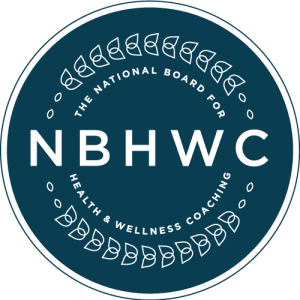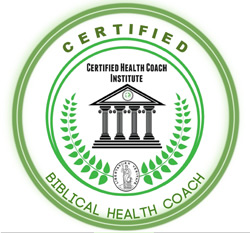The Simplicity of Whole Foods
Posted by Michele Bester on Jan 3, 2023 in Health Blog | Comments Off on The Simplicity of Whole Foods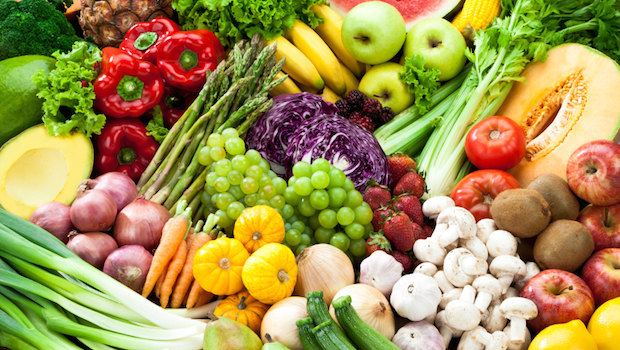
You’ve heard the phrase, “there’s a church on every corner.” You can say the same thing about diet plans! They are all over the place! If you Google diet plans, you will find articles that list 100 different diet plans. A small survey conducted in the UK found “that the average adult will try an unbelievable 126 fat diets over the course of their life. That means at least two new diets each and every year.”
Why is this? You want to get well, you want to be healthy, you want to lose weight, you want to fix your diabetes, high blood pressure, or high cholesterol, you want to enjoy life…you just don’t know how. In an effort – sometimes a desperate one – to lose weight, you latched on to the latest craze. While you may have temporarily experienced success, you ended up right back where you were, or even worse. Additionally, you may have been taken in by the marketing strategies of the weight loss market, which is not surprising considering the it was $72.6 billion in 2021. What is worse is that one plan recommends eating this and the next plan contradicts it!
No wonder people are confused when it comes to losing weight and how to get healthy! We are in a time of information overload. Who do you believe? Who do you trust?
The answer is simple: turn to the truth. The truth of God’s word, which never changes. God is the same yesterday, today, and tomorrow. He is not a fad or a fashion statement or fickle, and He doesn’t change His mind every so many years about what is good for you to eat and what is not.
What does God say?
 God’s word shows us the way to go. As the Creator and Designer of this marvelous body, God knows how to care for it and feed it for optimal performance. Think about your body as a car and the food you eat as the fuel. Would you put diesel into a car that requires gas? What would happen if you did? So it is for us, and the fuel source can be found in several places in the Old Testament.
God’s word shows us the way to go. As the Creator and Designer of this marvelous body, God knows how to care for it and feed it for optimal performance. Think about your body as a car and the food you eat as the fuel. Would you put diesel into a car that requires gas? What would happen if you did? So it is for us, and the fuel source can be found in several places in the Old Testament.
In Gen 1:12, first God created the food: “The land produced vegetation—all sorts of seed-bearing plants, and trees with seed-bearing fruit. Their seeds produced plants and trees of the same kind. And God saw that it was good (NLT)”. Then, in Gen 1:29 (GW), God gave this blessing and command to man, “I have given you every plant with seeds on the face of the earth and every tree that has fruit with seeds. This will be your food.” In Gen 2:16-17, with the exception of one tree, God again commands man, “you may freely eat the fruit of every tree in the Garden.” So from the very beginning, God established the nutritional principle of eating plant based whole foods as good and right for man.
Later on in Leviticus, God gives many more nutritional and dietary commands for the health and wellbeing of man. This includes clean (OK for us to eat) and unclean (not OK for us to eat) animals, birds, fish, and insects. God created everything with a purpose and sometimes that purpose was not for human consumption! For now, I want to stick with the foundational principle of whole plant foods.
What is a plant based whole foods diet?
First, it is important to know that a plant based whole foods diet it not a diet as we often understand and interpret the word. According to the dictionary, the word diet can mean “the kinds of food that a person, animal, or community habitually eats.” Eating plant based whole foods (PBWF from here on out) is a way of eating all the time. It’s not a quick fix or a temporary thing. Nor is it restrictive, or about calorie counting, or laborious. It’s a lifestyle: a biblical approach to eating that is practical, simple, and sustainable.
Whole foods are exactly as they sound: the whole product in its original unadulterated state. This includes:
- Fruits
- Vegetables
- Nuts and seeds
- Grains, beans, and legumes
- Herbs and spices
Think of an apple, banana, mango, avocado, broccoli, eggplant, cauliflower, almonds, cashews, sunflower seeds, quinoa, a kernel of wheat, kidney beans, lentils, sage, rosemary, garlic, cinnamon, cloves, cayenne, ginger. These are just a few examples.
Now in case you are getting concerned at this point and thinking….is this vegetarian? The answer is no! It can be, if you wanted. However, the emphasis is on the above list, while including smaller amounts of: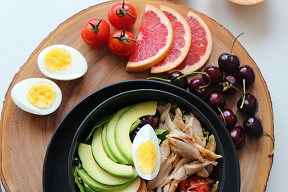
- Milk and some dairy products
- Meat, poultry, and seafood
- Minimally processed foods
- Natural sweeteners such as maple syrup and honey
The key with PBWF is to consume them as God created them or as close as possible with minimal processing. Once man starts tinkering with it, it loses vital and valuable nutrients and therefore health benefits. Not only are processed foods nutrient poor, but they are calorie dense and have added ingredients such as sugars, salt, preservatives, additives, and artificial colors and flavors. Many of these added ingredients are known carcinogens and hormone disruptors and contribute to ADHD, anxiety, and cognitive decline. (google “how processed foods affect your brain”).
In his book “What the Bible says about healthy living,” Dr. Rex Russell lists three core principles that are a guide to healthier eating and which support PBWF:
- Eat only substances God created for food. Avoid what is not designed for food.
- As much as possible, eat foods as they were created – before they are changed or converted into something humans think might be better.
- Avoid food addictions. Don’t let any food or drink become your god.
7 benefits of a plant based whole foods diet
- It’s not boring! There are so many options and so many ways of preparing. You don’t have to eat the same thing all the time. In fact, the more variety, the better, as different colors of fruits and vegetables bring different nutrient profiles to the table.
- It’s nutritious. As mentioned, processing strips away valuable, life-giving nutrients such as vitamins, minerals, and fiber that your body needs to thrive and heal itself. PBWF contain good, healthy fats and a quality source of protein.
- It’s healthier. Have you ever taken the time to read the food labels of what you are buying and consuming? Most processed foods have a slew of ingredients that read like a chemical experiment and with words you can’t even pronounce!
- It’s convenient. Wash an apple, peel an orange. Steam a sweet potato. Bake an eggplant in the oven. Have a handful of nuts. Cook some rice, add in some black beans and some fresh or frozen veggies like onions, peppers, and broccoli, season with salt, pepper, garlic, cayenne or chipotle pepper seasoning and toss with olive oil. Halve an eggplant, brush with olive oil, bake in the oven. When it’s done, chop up some chicken and mix with olive oil, garlic, and Parmesan cheese. Put this on top of the eggplant and have along with a side salad or carrot salad. You can make it as simple or as complex as you want! And remember – whole foods don’t have to be fresh. They come frozen, too, like mixed vegetables, broccoli, cauliflower, or Brussels sprouts and dried, like dried beans and lentils.
- It’s tasty. In other words….you can actually taste the food. When foods are processed, they lose a lot of their flavor, which is one of the reasons all the flavor enhancers such as salt, sugar, and artificial flavors are added in.
- It fights disease. There is a plethora of scientific evidence that a PBWF way of eating helps reduce the risk of high blood pressure, diabetes, high cholesterol, cancer, stroke, and being overweight or obese. When we replace processed foods with ones that have little or no processing and limit the amount of animal products we eat, we consume less saturated fat, less sugar, and more soluble and insoluble fiber. This is great for the entire gut, which happens to be where approximately 70% of the immune system is! Additionally, plants contain phytonutrients and antioxidants which help bolster the immune system and reduce inflammation.
- It’s synergistic eating. When God made all of this natural, wonderful stuff for us to eat, He packaged it in such a way that the vitamins, minerals, fibers, and digestive enzymes are all present in the right ratio to work synergistically together.
Making the switch to a plant based whole foods diet
The good news is….anyone can start now! More good news is…it doesn’t have to be done all at once. You can start with one or two small changes and work your way into it. If you have been eating processed foods for a long time, your taste buds will need a time of adjustment to learn what real food tastes like! Also, if you have been eating a calorie dense, nutrient poor Standard American Diet, your gut needs a bit of time to adjust to the higher fiber content. As a side note, the acronym for Standard American Diet is SAD!!!
Here are a few ideas to get you started. The good thing is that eating PBWF is simple enough that you can easily interchange ingredients with whatever you have on hand, what is in season, what is on sale, and what your personal tastes are. Keep in mind to buy organic produce where and when you can, especially with the dirty dozen.
- Have oatmeal for breakfast. I always buy organic because of known glyphosate in conventional oats. I add in raisins, ground
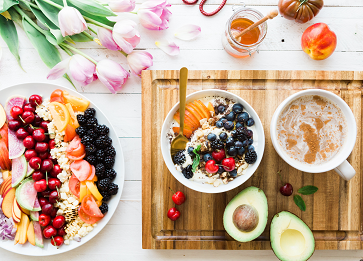 flaxseeds, cinnamon, and honey to mine, but you can add in chopped dates, nuts, pumpkin seeds, or spices like nutmeg, cloves, or allspice.
flaxseeds, cinnamon, and honey to mine, but you can add in chopped dates, nuts, pumpkin seeds, or spices like nutmeg, cloves, or allspice. - For a snack, pop some popcorn. Because I avoid GMO products I buy organic. 92% of corn produced is GMO. Organic always means non-GMO. I pop mine in healthy coconut oil and lightly salt it with Himalayan sea salt. Or have apples and cheese, along with a handful of nuts and a few figs. Or hummus with carrot and celery sticks.
- Instead of ice cream for desert, freeze a banana. When you are ready, blend it in a food processor or blender to make homemade banana ice cream. You can add in any kind of berries, too, to mix up the flavor.
- Drink smoothies during the day. I use a super greens powder mix as the base, add in fresh spinach or mixed greens, cucumber, pineapple, and ginger. If I don’t have pineapple, an orange works well or kiwi. You can add in a plant based protein powder to make it more of a meal.
- Make an omelet for brunch and add in any kind of chopped veggies you want or have on hand: tomatoes, onions, green peppers, mushrooms, spinach, kale, squash. Have it with or without cheese and a slice of whole grain toast and some fruit, like mango, pear, or avocado.
- Fix a quinoa or rice bowl for lunch. I cook up a serving of quinoa, which is an excellent source of plant protein, and I add in some
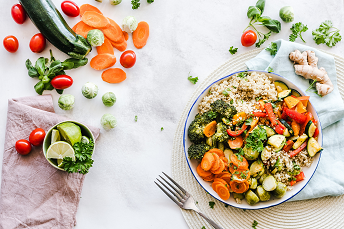 kind of beans – black, pinto, white, kidney – and some kind of vegetables – mixed, green beans, sweet potato, cauliflower, broccoli, or butternut squash. I use frozen or fresh. Add in whatever spices or herbs you like. Experiment! Top it off with a healthy dash of olive oil and a crushed garlic clove.
kind of beans – black, pinto, white, kidney – and some kind of vegetables – mixed, green beans, sweet potato, cauliflower, broccoli, or butternut squash. I use frozen or fresh. Add in whatever spices or herbs you like. Experiment! Top it off with a healthy dash of olive oil and a crushed garlic clove. - Roast a chicken in the oven and when you do, make a pan of roasted vegetables at the same time. I like to chop up turnip, rutabaga, radish, and sweet potato, mix with coconut oil, season with salt, pepper, and Italian seasoning and bake.
- Use a crockpot to make lentil stew. Lentils are another good source of protein and fiber. I use beef stock and add in lentils, onions, garlic, celery, carrots, and rosemary. If I don’t have celery or carrots on hand, I’ll use a bag of frozen mixed vegetables. I’ll serve it with a side of homemade cornbread.
I hope this helps! If you have any questions, email me at coach@throughhimhealth.com.
If you are interested in learning more or need help in making and implementing lifestyle changes, contact me for a free discovery session to see how we can work together. You can learn more about me here.

